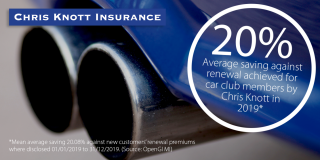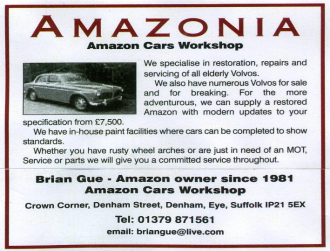As you see the buyers guide for the Volvo 1800 is very long. Of course you can read it completely but when you arrive at the car for a closer look you’ll forget most of the tips above.
Always be realistic with the price the seller is asking for his P1800: you can’t expect a showroom-condition P1800 to be £2,500. Keep in mind what your intention with the car is (daily driver, hobby-car, to restore it completely or partially, or do you want a car that is actually in brand-new mint condition) and think what you want to spend.
Always take a test drive with the car!
Please use this summary and take a print of it with you when you’re going to have a look:
- Bodywork: check for rust, especially the area around the headlights and indicators, area around the grille and
bonnet (also the hinges), top and bottom hinges of the doors, front- and rear wings, front and rear window areas,
inner front wing panels, wheel arches, the parts in front and behind the rear wheel, radiator support, area
between the rear lights and fuel tank cap, sills and floor panels. Also check the condition of the bumpers.
- Engine: check for oil usage during the test drive (go to 60mph, let the car drop down to 35mph and put the
throttle pedal to the metal: if you see black smoke leaving the exhaust the car has a oil consuming problem). If
possible: perform a compression test. An engine that “sounds like a charm” isn’t the best buy: when running idle
the car should have some “dips” in revolutions sometimes. Be sure (in then case of a 1800E or 1800ES) the
injection system is working fine.
- Transmission and driveshaft: check for noises and test the clutch (ask for permission) by putting the car in third
gear and engage the clutch pedal. If the car stalls the clutch is fine, if it keeps running the clutch needs
replacement. Listen carefully for noises during a test drive: a constant screaming sound and banging means
there is something wrong with the driveshaft (but not expensive to repair).
- Cooling system: check the hoses, radiator and when the engine is hot enough test the heating system in the
car. In a closed cooling system: check when hot that engine coolant isn’t boiling in the expansion tank.
- Braking system: check for any leaks and test during a test drive if the car is pulling to one side when braking.
Also check the brake booster and brake cylinder for any leaks.
- Steering & suspension: test the shock absorbers and springs by pulling down the car. After release the car
should rise up and stop shaking immediately. If it keeps shaking the shock absorbers needs to be replaced.
Check for any play and noise from the front axle during the test drive. Be sure the car is steering properly and
not too heavy (check the steering box for leaks and wear).
- Wheels & tyres: check for any damage to the wheels or rims and tyres. The condition of the tyre can tell you a
lot about the wheel alignment and condition of kingpins, ball joints and tie rods. Check the tread and the age of
tires (DOT-code, tires shouldn’t be older than 6 years). Check for rolling sounds (caused by bad tyres or
bearings).
- Interior: check for rust at the inside (especially the inner sills and floor panels) and the condition of the
upholstery. Take a close look at the rubbers (especially the rubbers of the windows and windscreen). Check the
seats for its support and the seats shouldn’t be sagging (otherwise it needs new foam and/or new seat straps).
- Electrical system: check all lights and check that all lamps are shining at the same strength (if not: the car can
have trouble with its negative/mass). Also check the condition of all cable harnesses and electrical wires.
In the case of an 1800E or 1800ES: be sure the electrical parts (harness, ECU, sensors) of the D-Jetronic system
is working fine (engine should run perfectly and not be having troubles at lower revs).
- Paperwork: check if all registration papers and service history (if possible) are complete.
If you have any doubts (in the car or yourself) you should consider a purchase inspection. If the seller doesn’t want to co-operate with an inspection you know there is something wrong with the car. A purchase inspection will cost money but can save you spending money on big repair costs and the defects that will appear can be a good reason for negotiating on the price.
And of course: take someone with you when you’re going to have a close look because two pairs of eyes see a lot more than only your eyes.
Good luck with finding the right Volvo P1800 for you!
Any questions or comments? Please feel free to contact the P1800 SERIES ADVISOR for more uptodate info and a friendly chat
The Volvo P1800 buyers guide: the summary

Prices of 1800-series cars may differ from country to country, so the prices are on an individual basis. Prices for old Volvos in The Netherlands are a lot higher than in Belgium and France, but Germany has almost the same prices as The Netherlands.
The biggest factor in price is the condition of the car: an P1800 that needs work and doesn’t have a MOT (too much rust or brakes that won’t work) the price should be about £3,500, but a car that is suitable as daily driver (with a little rust but nothing major) should be around £8 to 10,000 and a P1800 in perfect condition should be around £20/25,000. These prices may vary from country to country and, of course, the exact condition of the car determines its price. Also extra accessories or service history can raise the price a bit. A P1800 Jensen can be a lot higher in price than a late 1800S but it all depends on the market.
Volvo P1800 for sale:
what to pay?
Most parts for the Volvo 1800 are very readily available. Parts can be bought as brand new products at many webshops, most of them aren’t original Volvo-parts but they’re good enough as replacement (in some cases: a lot better than the original). Some parts are out of production and aren’t being produced by other suppliers but many parts can be refurbished at specialists (like radiators or alternators). Most rubbers are also very easily available. There are many more quality supply sources nowadays and most suppliers have web-shops for ease of purchase.
Volvo parts for the P1800




Please check that the licence plates and the papers are complete. Check if the chassis number (VIN) on the registration papers matches the VIN-number on the car. The VIN-plate is located under the bonnet at the firewall on the passenger side, but the VIN is also stamped on another location: check the registration papers where it should be located. Also check if the owner has a service history. Most Volvo 1800-cars are maintained by the owner itself: check if the seller has any copies of invoices.
Volvo P1800 registration papers & VIN

Check all wiring harnesses for cracks or rusty plugs and connections. Check all lamps of the car to see if the lights are matching, with their correct light output, differences may indicate earth-problems or rust at the housings of the lights. Test the indicator lights (if there is a problem with it: in most cases the relay is defective). Also test the horn of the car: if it doesn’t work there can be a problem with the horns or in the cable in the steering wheel.
The only part of the electrical system that can be very expensive is the cable harness for the Bosch D-Jetronic system of the 1800E and 1800ES. Many injection failures of the B20E and B20F are caused by this harness. Be sure the ECU is working fine, because it’s expensive to repair or replace. Be sure to pay close attention to the injection air pressure sensor (can be found at the right inner wing), injection trigger contacts and the distributor (which can be replaced by an electronic ignition). All these parts are hard to get and expensive.
Volvo P1800 electrics
The headlining of the Volvo P1800 is usually in good condition. If it needs to be replaced it isn’t expensive but it’s not an easy job.
Interior of a Volvo 1800ES with wooden steering wheel

Over the years it’s most likely the interior and upholstery has had its day. Sun (UV) and aging will cause cracks and tears in the dashboard padding, the cardboard kick panels are bound to be worn and rubbers can be as dry as the Sahara. Also moisture is a big enemy for the upholstery and interior. The Volvo P1800 can get very wet inside if door rubbers, window rubbers (like guide channels, window brushes, scrape rubbers, etc) and grommet or rubber plugs are worn out or are too dry. Check the windscreen and rear window rubbers for any damage or leaks, because a perished or damaged rubber can cause rust to the body. Broken side window rubbers will lead to rust inside the doors, so those rubbers need to be in good condition as well.
Replacing rubbers isn’t very hard (except the windscreen and rear window rubbers, that can be a hell of a job) but if many rubbers need to be replaced it’s expensive. Dashboard pads are still available new but can be expensive (especially when you need to replace both pads).
Lift up the carpet set (or rubber mat) to check for any rust at the bottom of the car. Especially check the sides (sills), the pedals and kick panels: if there is any rust it means there could be a leak at the windscreen.
When you have a look at the doors: check for rust at the bottom of the doors and check the condition of the door panels. Open and close the side window and feel how smoothly it goes up and down (if it’s hard: the cable of the door window can have a problem but it’s pretty easy to replace). Check the hinges of the doors: if the door drops down when you open it the hinges are worn.
The upholstery is now available again if you want to replace it, it isn’t cheap but you’ll get the car in the same condition as it was when it left the factory. It’s possible to have an upholsterer make a custom-made interior but that is a expensive option and if the car has foam in the seats you should check it is still in very good condition (if not: the foam needs replacement and/or the elastic seat straps). New seat padding (foam) is available (except for the Jensen) and not expensive.

Volvo P1800 interior and upholstery
Please note tyres only last for about 6 years. After 6 years the rubber has lost the best of its compound. In most cases the production date is found on the tyre: the week and year is mentioned on the tyre and is called the DOT age-code. For example: 2607 means the tyre was produced in week 26 of 2007. If you see a 3-digit number it means the tyre is made before 2000 (for example: 187 means: week 17 of 1997). Needless to say such old tyres need to be replaced as soon as possible. Check also the spare tyre!
The wheels needs to be rustless and have no visible damage like bumps or dents. Some curb damage doesn’t look nice but it doesn’t affect the safety of the car. Some owners put custom-made widened rims under their Volvo P1800 but if it isn’t done professionally it can be a big risk for your safety. If you want to put wider rims on your car it is best to buy original GT-wheels, like Kronprinz, Lemmerz or the TUV-approved replica wheels sold by Scandcar . Other nice options are the Wolfrace-wheels (or Ansen Sprint almost the same design), Minilites (again: do not buy the imitation-versions), GB wheels or Panasport wheels. Some alloy wheels of Suzuki (wheels of the small jeeps like the Samurai, Jimny), Chevrolet and some other Japanese brands also fit on the P1800 Jensen and 1800S (but you’ll have to be sure the ET is correct and please: don’t work with spacers).
Since the 1800E the rims have been changed from 5 x 114,3 to 5 x 108 (which is the same as the 140/164 and 240). These days you see a lot of 1800E and 1800ES-cars with Virgo-wheels (240 Turbo), Galaxy-rims and Polaris-wheels.
If you hear any rolling or humming sounds when you take the car for a test drive please check the tyres and the bearings of the wheels
The tire wear indication chart

Tyres are one of the most important parts of the car: it’s the only way of contact with the road. You must never try and save money on tyres, also choose a good brand like Goodyear, Bridgestone, Michelin, Pirelli or Vredestein. Make sure the tread is deep enough and there are no cracks caused by sunlight. The radial tires are the best choice for a P1800: it provides better road handling and are safer than bias plys (radials are stronger, stiffer and handle a lot better). Look after the tyre wear and keep an eye on the tyre pressures:
- Over inflation: the centre part of the tyre has excessive wear, caused by a too high air pressure. In this case the
tyre is riding on the middle of the tread and wearing out prematurely.
- Under inflation: the outer parts of the tread are more worn than the centre part. It isn’t caused by too low a tyre
pressure but by a bad wheel alignment (which may indicate a worn tie rod or ball joint).
- One side wear: an inner or outer rib of the tyre is worn more than the rest of the tread. Caused by bad wheel
alignment, worn kingpins, ball joints or bad bushings/silent blocs of the control arms.
- Cupping: damage on the sides (cups or scalloped dips) means worn suspension parts (mostly shock absorbers,
kingpins, ball joints or springs). If you see a brake spot on the middle of the tread it means the car has made an
emergency stop. It will cause a noisy tyre (rolling noise) when you drive the car. Cupped tyres needs to be
replaced as soon as possible: tyre trimming is a bad option (the tyre is trimmed in cold condition but when the
tyre is warm again the noise can appear again).
- Feathering: the edge of each tread rib has a rounded edge on one side and is sharp on the other side. You’ll
need to feel it because it isn’t always visible. If you have a closer look you’ll see every rib is pushed aside. It is
caused by a bad wheel alignment due worn bushings.
Volvo P1800 rims & tires
Volvo P1800 steering & suspension


The Steering and suspension system of the Volvo P1800 is very reliable, but of course they have some weak spots. Take a close look on the tie rods, steering rods, bushes of the wishbones, sway bars and the torque rods/support arms (and their silent blocs) of the rear axle.
During the test drive you should check for any play in the steering wheel and column. It can tell you a lot about the condition of the bushing of the idler arm, ball joints and steering box itself. Check the steering box for any leaks and if the car is steering heavily it could mean the steering box is over-tightened which can lead to premature wear (replacing the steering box is expensive).
To test the shock absorbers and suspension: lean on the car and push it down. After releasing the car it should stand still immediately after it comes back up. When the car is still shaking the shock absorbers have to be replaced. The condition of the springs can be assessed during a test drive: if the car is too jumpy and can’t handle big shocks the springs needs to be replaced. Springs and shock absorbers are quite cheap and not difficult to replace.
Check that the car doesn’t pull to one side during a test drive. It means the brakes can be sticking to one side and require a closer look to solve it. In most cases the brake calipers may need to be replaced (always do this in pairs to prevent brake difference).
Also check the state of the brake hoses, brake pipes and brake cylinders for any leakage or defects. Fortunately these parts aren’t very expensive and are pretty easy to replace. To test the brake system for any leaks: press and hold the brake pedal for a longer duration. The brake pressure should be the same. If the pedal is sinking as you hold it down, you’re sure something is wrong.
Parts for the brake system are readily available and are not very expensive (except for the brake drums: they are expensive). Working on the brake system is also pretty easy as well but you’ll really have to be sure of what you’re doing because making a mistake can be serious! When you are taking a Volvo P1800 to a workshop or garage to fix the brake system you’ll have to be prepared for some big bills: working on the brake drums and making the right adjustments are a time-consuming job and a lot of garages don’t even know how to work on such old brake systems!
The special hub puller tool Volvo part number 9991791



The braking system of the Volvo P1800 is very reliable. Since its introduction the car has been fitted with front brake discs. Until 1968 the car had a simplex (single circuit) brake system and since MY1969 the car has a dual-circuit brake system. At MY1970 (introduced in August 1969) the 1800-series was equipped with rear brake discs (rather than brake drums).
Be sure the brake servo is working properly. There are three types of brake servos: the Girling brake servo (same as the Amazon’s), the 673678 brake booster (used in the 1800E and ES),and aftermarket brake boosters like the Lockheed or Paton (PBR) VH44L, which is used as a replacement for the Girling brake servo. All versions can leak which means the brake system can loss its fluid resulting in non-working brakes! These brake servos can be repaired, but it isn’t easy and not in all cases can the servo be fixed, or you can replace it with a new one. Note: the brake servo of the 1800E and 1800ES is pretty hard to get and now very expensive!
The brake system with rear brake drums is very reliable but rear brake drums are not very easy to maintain: the technique is simple but getting the brake drums apart is a tough job (the easiest way is to get the Volvo special brake drum puller, part number 252423 or 9991791, but the puller is pretty expensive for a “simple” tool). Also adjusting the brake system when reassembled isn’t very easy. Since the brake system is a simplex system you’ll have to be sure it’s working well. Also check the brake cylinder for any leaks (brake fluid).
Volvo P1800 braking system

Check the condition of the radiator and all hoses. If you see any traces of coolant (or anti-freeze) it means there are some small leaks. Also check the radiator of the heating system because it’s more expensive to overhaul than the radiator for the engine.
When the engine temperature is high enough the thermostat should be opened, check the heating system in the interior of the car. Use the heating controls and fan to check if they’re working fine and the car is getting hot and cold air is blown in. When the heater controls don’t respond properly only warm or cold air is available when the controls are at warm or cold temperature settings, it means there is a problem with the heater valve, or maybe with the cables to it, or the heater radiator. None are a cheap fix.
In case of a closed cooling system: check the expansion tank of the P1800 for any leaks and while the engine is running there shouldn’t be bubbling water (but bubbling coolant can also be caused by the cap of the expansion tank, you can fix that immediately by pulling the spring a bit and tighten the seal).
Volvo P1800 heating & cooling system
The Volvo P1800 comes with 4 transmission variants, the M40 4-speed gearbox, the M41 4-speed manual gearbox with electronic overdrive, the M410 4-speed manual gearbox with overdrive and replaced with the MW41, or the BW35 automatic transmission.
All transmissions are very reliable but you should listen carefully for any noises: a high/whooping noise means the needle bearings can be broken (manual gearboxes). If the top gear is quieter than the other ratios it means the gearbox is worn out. The condition of the BW35 automatic gearbox can easily be checked by looking at the automatic transmission oil (ATF): if it’s clear red everything seems to be fine, but if it’s darker red or black the gearbox might have some serious problems! Also check how the automatic transmission changes gear while driving: delayed gear changes can indicate problems with the gearbox. But late gear changes can also be caused by the kick-down cable. Replacing a gearbox will take about half a day (plus the costs of a new/rebuild or used gearbox).
Manual gearboxes of old Volvos always sweat some oil, so don’t panic if the gearbox is a bit wet. But if you see oil traces from the bearings or propshaft there are some worries. Fixing it means the gearbox should be disassembled, repaired and reinstalled again (the costs of replacing the parts aren’t expensive but it will take a few hours).
The clutche of the 1800-series are very reliable. To test the clutch: put the transmission in the third gear and release the clutch slowly. If the car stalls the clutch is fine, if it keeps running the clutch is worn out. Please be aware that not all car sellers like this test so ask them if they mind you trying this text. If the gearbox and clutch produces a screeching / rattling noise or doesn’t fully engage, the release bearing and/or the pressure plate is worn out. Note: please also check the gasses from the exhaust when you test the clutch: if lots of black smoke is coming from the exhaust (spraying the street or pavement black) the engine can be worn as well!
When you drive the car and you’re switching through the gears, the revs of the engine should drop immediately when the lever is in the higher gear. Should the revs rise for a moment it means the clutch is slipping. Replacing the clutch will take about 4 hours plus the cost of the new clutch set (clutch plate, pressure plate and always replace the release bearing as well). In most cases it will be about £600 (including parts and VAT) if you can’t do it yourself.
To test the overdrive: on a test drive and the overdrive should be engaged when you reach 45mph by dipping the clutch slightly and using the overdrive switch. When you release the clutch pedal the revs of the engine should be a lot lower. Please test it several times and also for a few miles because overdrives can drop out due tilting pistons or solenoid problems.
The late type 1800-series (introduced in August 1968) doesn’t have a clutch master (main) cylinder and slave cylinder but are worked with a clutch fork and clutch cable (the same parts as the 140-series). Check the condition of the cable under the bonnet because it can break. Clutch cables aren’t expensive but you don’t want a broken cable when you’re driving home!
Also check the driveshaft for noise and movement. In most cases of noise and movement the universal joints of the prop shaft are worn out. If you hear a screaming noise it means the bearing of the propeller shaft is worn and needs to be replaced. Please replace the rubber (bearing support) as well. Replacing these parts are easy and pretty cheap.
Make sure the differential isn’t noisy. If it’s “singing” or whistling it might need a rebuild. Rebuilding a differential with new bearings and pinions can cost some serious money!
A B20F engine (with D-Jetronic) in a Volvo 1800ES imported from the USA


If you’re planning to buy a Volvo 1800E or 1800ES: these cars are equipped with a fuel injection system. In both cases it’s the Bosch D-Jetronic system. It’s very reliable but when you’ve got problems with it, you can expect high bills. Some parts are pretty hard to get or may need refurbishing. In both cases it wouldn’t be cheap. Be sure the engine is running smoothly and doesn’t hiccup in lower revs when accelerating. Also be sure it doesn’t smell of petrol (which can be caused by leaking injectors or a broken fuel pressure accelerator). Also the cable harness of the B20E and B20F is sensitive for hitches and/or bad connectors. If there are problems with the distributor you should consider to replacing it with an electronic ignition.
Volvo 1800-series transmission and powertrain
The engine of the Volvo 1800-series is solid and pretty reliable. Keep in when a B18 is running at idle it should have a slight “dip” in revolution.
Be sure you can’t see any oil leakage caused by perished seals or filter gaskets. A seal or gasket isn’t expensive but it can be quite a job to replace one. Also check the oil level and the condition of the oil.
Replacement parts are very easy to get for the B18- and B20-engine, but the parts of the Bosch D-Jetronic injection system (used on the B20E and B20F) are rarer and sometimes pretty hard to get. Due to the rarity of these items, prices of some (like injectors, cable harnesses, air pressure sensors and fuel pressure controllers) for the B20E or B20F-engine are rising and it is now common for owners to remove the injection system and revert of twin SU carburettors.
The B18- and B20-engines can handle high mileage, so don’t be scared to buy a car which has already driven 125.000+ miles.
Check the exhaust system for its colour: when it’s completely black inside the car has a serious problem with oil consumption. If it’s gray then it will be OK. Another great test is to check the colour of the gasses when the engine is running: step on the throttle a few times and check the colour. If it’s gray there is no problem, blue gasses from the exhaust means the pistons are worn out, water in the engine (due a broken head gasket) or the car consumes too much oil (but it can also be the valve seal rubbers, which aren’t a big cost to replace) and black gasses means the engine or carburettor isn’t adjusted properly.
Also be sure the cam gear set is replaced (in case it’s made of steel and fibre) or a steel version is mounted. The all steel cam-gears will make some more noise but they will last forever!
The best indication of the condition of the engine is a compression test. An engine in good condition will have a high compression.
All cylinders shouldn be above 10 bar. A rebuilt B18- or B20-engine will have about 13 bar (or above) compression.
Another simple test: when you take the car for a test drive, speed up to about 60mph and release the throttle pedal. When the car is drops to about 35-40mph put the pedal to the metal and look in the rear view mirror: if black or dark blue smoke is visible you’re certain the car is consuming a lot of oil. It can be caused by valve seal rubbers (B18, the B20 haven’t got the “umbrellas”) or in worst case: broken piston rings. In the case of the last option: the engine needs to be rebuilt and that’s expensive.
The carburettors are pretty easy to maintain. The SU- and Zenith-Stromberg carburettors were commonly in use by other manufacturers than Volvo, meaning parts are pretty easy to get. If the previous owner replaced the
carburettors of his B18B or B20B with Webers: the Weber-carburettors are also very reliable and parts are also easy to get.
The engine of the Volvo P1800

Just like many other old vehicles a P1800 can rust badly (and much worse than a PV or Amazon). Keep in mind that welding a P1800 is very difficult because wings, nosepiece, etc are welded to the rest of the body. Body repair parts of the P1800 are very expensive.
When you’re off to have a look at a Volvo 1800 please make sure the following body panels and parts of the chassis aren’t rusty:
- The area around the grille can be rusty due standing water at the chrome surrounding (due a perished or
missing rubber). Also be sure the car doesn’t have any damage due accident or corrosion because it isn’t easy
to fix it.
- The front wings can rust at the area around the headlights and indicators. Also the wheel arches and inner
wings can rust badly. Repairing it is difficult and expensive! If it’s in good shape: you should definitely buy a
pair of Locari inner splash screens which prevents the front side of the wings from standing water and mud
(so it will deter rust).
- Check all areas under the bonnet (also the bonnet itself), especially the cross-member (radiator support). This
cross-member is made in four parts and each part can rust badly. Replacing it can be difficult. Also check the
battery box.
- The sills are also very susceptible to rust. The sills of the P1800-series are made of three parts: the outer sills,
inner sills and a centre part that is welded into those two. When one of the sills is rusty you can expect the
other two will also have rust.
- The area just above the sill and in front of the rear wheel is also a place that can rust badly. Also take a look
behind the stone guard (standing water will lead to rust).
- Check the area around the windscreen and rear window for any rust, caused by a badly fitting screen rubber.
Check all the places where water would make its way down.
- The doors are also parts that can rot badly. Because Volvo thought that only a partial seal was needed for a
door,
water could easily get into the door and when the drain holes become blocked this water could lead to
serious
damage. Check the bottom of the doors carefully for any rust, also the doorway above the sills. The gutter of
the 1800ES is also very rust-susceptible.
- At the bottom: check the floor panels, jack supports (outriggers, especially at the front of the car), front cross-
member (must also be inspected under the bonnet), inner sills and the steering box mountings.
- Test the hinges of the doors and bonnet. The hinges of the bonnet are mounted on very a very tender area of
inner bodywork so this part can easily bend or break.
- At the rear of the car: check the wheel arches and the inner sections of the rear wings. Check the boot-lid for
any rust and look inside the boot for any rust (also check the spare wheel well). Have a close look on the rear
lights too because this area can also rust badly (especially the rear light mounting plates), just like the upper
and lower
panels between the rear lights. The lower rear wing behind the rear wheels are very susceptible, so is the fuel
filler area.
If everything on the list above is looking fine, the condition of the bodywork shouldn’t be a problem! If you have any doubts about the bodywork (for example: the owner used filler to cover hidden rust on the bodywork) take a small magnet (to check the bodywork: if filler is used the magnet won’t stick to the metal!).
The chrome bumpers are also very sensitive: dents and rust can damage the bumpers seriously. Re-chroming the bumpers isn’t cheap, you should consider replacing the bumpers with stainless steel bumpers if they are in need of replacement.
Please note the costs for welding a car can be prohibitive (unless you can do it yourself), especially the Volvo P1800. If you can’t weld yourself (or you don’t know a cheap welder): welding bodywork can be much more expensive than engine problems or replacing brakes and suspension-parts.
Volvo P1800 bodywork

Below you can find the complete buyers guide for the Volvo P1800 Jensen, 1800S, 1800E and 1800ES. Separated into each section of the car so you’ll get a detailed description of where you should pay extra attention when you’re looking for a P1800. A summary is included at the end of this buyers guide. Have fun!
The Volvo P1800 buyers guide

Before starting the search for your classic car you’ll need to ask yourself what you want from it, do you want it to use it as a daily driver or do you want to restore the car, are you planning to buy a spotless car that has Concours credentials or do you want a car that isn’t perfect but just needs a bit work? All these factors will give you an idea of the car you are looking for and will also help determine the budget. You won’t find a car that is in a showroom condition and only costs £500,– and a rustless P1800 Jensen isn’t available for £10.500– (unless you’re extremely lucky).
Please keep in mind that the tips below are just an indication for a car that is in a good state. A perfect car is hard to find and they are available, but they won’t be cheap. So don’t to pay peanuts for a car that needs little or no work. Decide for yourself what budget you’ve got and how much work you can take on with the car determines the cost of the finished project.
What you plan for the car

The Volvo 1800 as a daily driver
If you’ve have the idea of using a Volvo 1800 as a daily driver: remember getting into the car is more difficult due to the low entry. Also due to the smaller steering wheel it’s a wee bit harder to turn the car at low speed (as compared with the PV or Amazon), ut it’s still good enough for using daily. The last Volvo 1800 (the E and 1800ES) are the most comfortable versions of the P1800-series thanks to their excellent seats and small improvements during the years, but a 1800S is also still suitable. A P1800 Jensen built car has supremely comfortable seats, surprisingly, as the lumbar adjustment had already been introduced by Volvo.
Buying some books or workshop manuals of the Volvo P1800 will help you to decide which model is for you.

A sketch of a Volvo P1800 Jensen
The Volvo P1800 (or 1800S, 1800E and 1800ES) is now a pretty rare Volvo and not easy to find in good condition. They are more expensive than a PV, Duett or Amazon but you’ll get a unique classic car which still has many fans. With this buyers guide for the Volvo 1800-series we will help you to find the right 1800 for you.
It’s a lengthy guide but you can find a summary at the end (also very useful when you’re going to check over a car, so take the summary with you).
P1800 buying tips
The VOLVO ENTHUSIASTS CLUB



Powered by The Volvo Enthusiasts CLUB 2010
Copyright © 2016 - 2024 All Rights Reserved by Vec Directors & Members








Advertisers


Do more with your Classic Volvo ! come join us .....
Volvo Enthusiasts Club 2010-2023 Limited – Company Number 10554132
Incorporated under the Companies Act 2006
